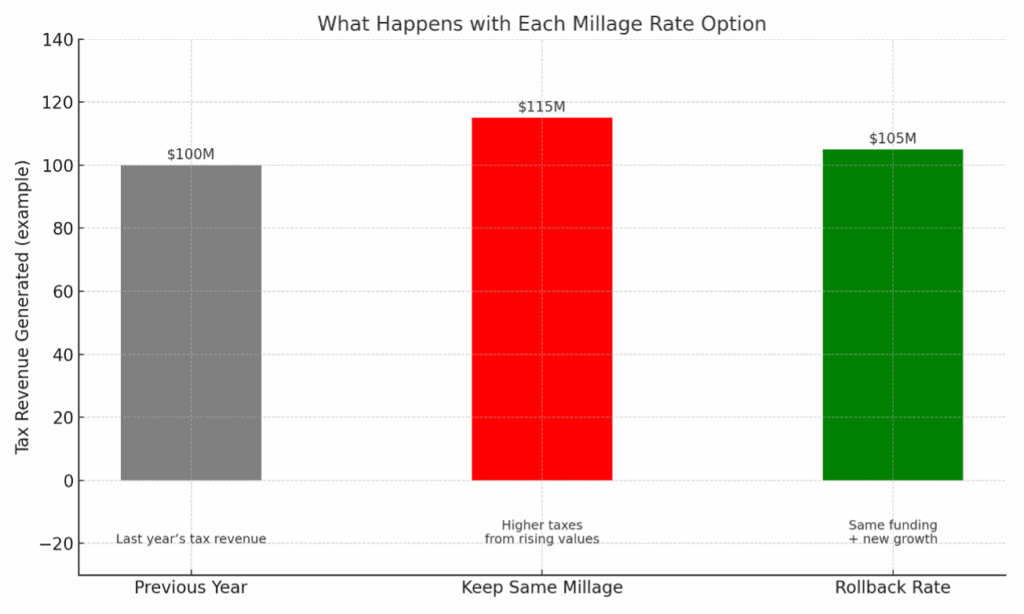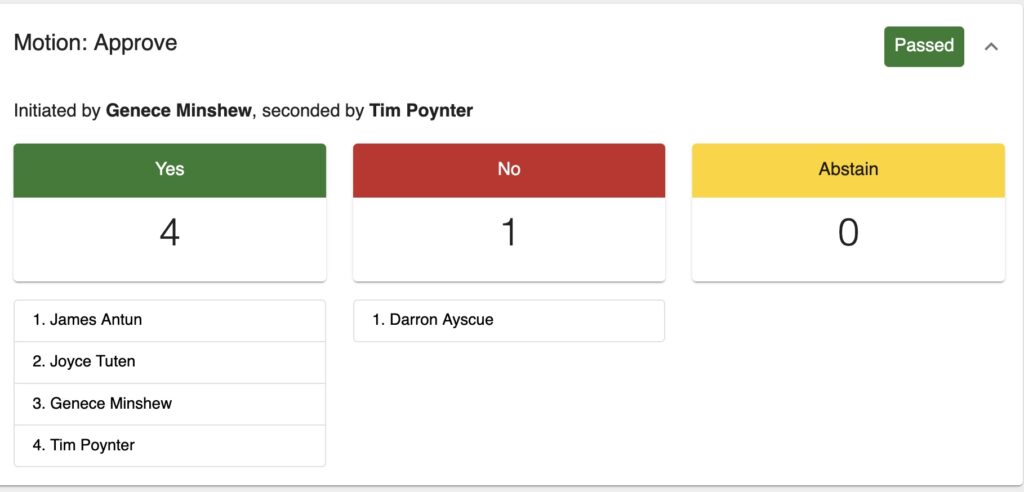Your elected leaders made the wrong decision last night and voted to keep the same millage rate on your property taxes for the upcoming budget year.
Let’s cut through the confusion and say this plainly: The right vote should have been for the rollback rate and we are not alone in that belief:
Florida’s new Chief Financial Officer, Blaise Ingoglia, made it clear this week at a press conference with GovernorDeSantis:
When property values rise, millage rates should go down—not stay flat.
Anything else is a hidden tax increase on homeowners. Ingoglia recently stated, ‘If you want to keep the same revenue, the millage rate should be going down, not staying the same.’
He warned that when counties say they’re ‘holding the millage rate steady,’ they’re actually imposing a tax hike.
Nassau County should have followed the same fiscally responsible principle. Voters and commissioners alike must recognize that adopting the rollback rate is not a cut—it’s a necessary check against runaway spending fueled by inflated property values.
Why?
Because the rollback rate provides all the same funding as last year’s budget — plus new revenue from properties that were sold or newly built this year. That’s not a cut. That’s growth with common sense.
What’s the Difference?
Millage Rate: This is the tax rate applied to your property’s assessed value. 1 mill = $1 per $1,000 of taxable value.
Rollback Rate: This is the adjusted millage rate that would bring in the same amount of revenue as last year, even if property values have increased.
So:

And yes — even the rollback rate brings in more revenue, because of new development and property turnover.
No More Fear-Based Budgeting
In the past, voting for the rollback rate sparked warnings of deep cuts, service reductions, and doom. But reality didn’t match the fear.
Trash got collected.
Parks stayed open.
The sky didn’t fall.
The rollback rate simply stopped the government from grabbing more than it needed.
If the City Manager needs to request funds for truly urgent matters, they can always come back before the final budget vote. This is how responsible budgeting works.
Where Did All the Money Go?
It’s time to compare today’s bloated budget to the past: Look at the headcount, the vendor contracts, the fleet size, and the IT expenses.
We keep being told that new spending will “generate revenue” or “improve efficiency.” But years later, where is the proof?
Do you feel the city is more efficient?
Instead of chasing more taxes, let’s chase better outcomes.
Smart Alternatives to Higher Taxes
Let’s talk about fiscal management, not just tax rates.
Here are practical steps the city could take before ever raising your taxes:
- Get out of the marina business (a $700K annual loss).
- Reevaluate the golf course, which racks up $500K+ in losses yearly — before you count the Top Tracer debacle.
- Re-think city-owned properties. Why hold onto assets that aren’t delivering value or bringing in tax revenue?
- Take Brett’s for example. It was once a $5 million asset, now it’s a $6 million liability. That’s an $11 million swing — in the wrong direction.
- What if instead of borrowing $6 million to demolish it, we brought in a qualified developer to:
- Remove the old structure at no cost to taxpayers
- Build a beautiful new restaurant or two
- Help fund the seawall
- And attract more people to enjoy our waterfront
- That’s called turning a liability into a revenue stream.
- And that’s what real leadership looks like.
Bottomline:
You don’t need higher taxes which is what you got tonight.
You need smarter decisions from the people managing your tax dollars.
Here is how your City Commissioners voted. We give a thumbs up to Darren Ayscue for standing alone and voting the right way.



